There are some days when everything goes smoothly.
And then, there are days where nothing seems to go right.
Your tasks are difficult, you are behind schedule, yet another urgent task pops up… Your palms are sweaty, knees weak, arms are heavy.
That’s the moment when you should reach out and ask someone for help.
In this blog post, we’ll learn how to ask for a favor professionally and how to get the other person to say ‘Yes’.
Table of Contents
Why it’s important to ask for a favor?
Asking for a favor can feel awkward and nerve-wracking. But, we all need help sometimes — and there’s no shame in that.
If you never ask for help and attempt to do everything by yourself, here are some of the possible outcomes:
- Ending up stressed and overworked
- Poorly done tasks
- Prolonged deadlines
- Feeling alienated from your coworkers
- Feeling ashamed if you make a mistake (which is not unlikely when you’re not sure of how to do something)
If you want to get the job done better, faster, and easier, ask someone for help.
Your results and performance won’t be the only things that will improve — helping each other nourishes relationships and builds trust within your team. It almost goes without saying, but asking others for help means that you are also willing to give others a hand when they need it.
Do you worry that others will see you as incompetent if you ask for help?
In a positive work environment, asking your coworkers for help is not seen as a sign of weakness or unskillfulness, but quite the opposite — it shows self-awareness and willingness to improve and do your job right.
Tips for asking for a favor professionally
How to ask for a favor in the workplace?
Here are some things to keep in mind.
Determine who’s the right person to ask
First things first — make sure you’re asking the right person for a favor.
Imagine going through the whole hassle just to find out that what you’re asking is out of their expertise — or there’s someone else who could’ve given you better insight. You’d waste both your and their time.
To prevent that, do your research and/or ask around who’s the best person to reach out to when you need help.
❗ Important: Once you find the right person, don’t forget to acknowledge their expertise. If you particularly like some of their work, you can mention it — everyone likes a genuine compliment. Besides, asking people for a favor because you know they’re skillful at something sounds better than asking them for a favor because the task is boring/difficult.
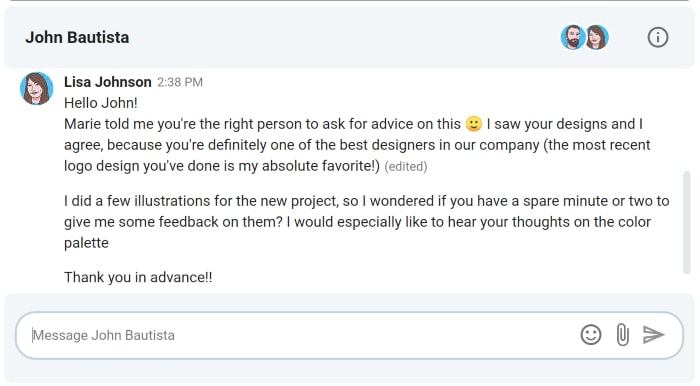
Introduce yourself
If the person you are contacting for a favor is not someone you’re regularly working with, briefly introduce yourself.
You don’t need to share your whole life story (check the next tip!), but let them know:
- Who you are — i.e. the position you hold in a company,
- What you are currently working on, and
- What’s your connection to them (as to why you chose them to help you).
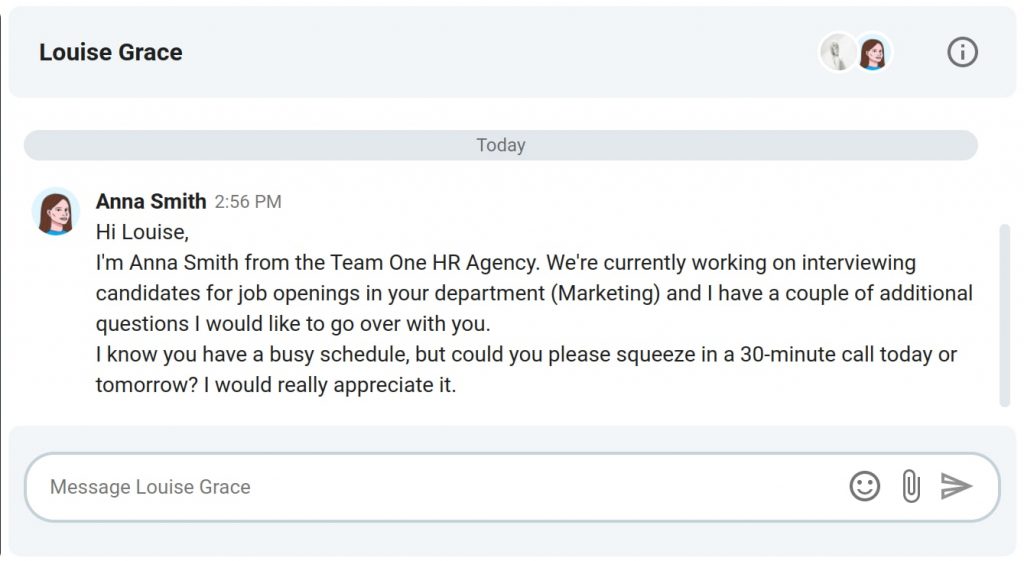
Give all necessary information, but be concise
Your message should be short and sweet.
Include all necessary details, such as:
- Deadlines,
- Materials needed,
- What exactly you need them to do,
- Specific details, etc.
But, be concise.
Work environments are fast-paced and people are busy.
Don’t ramble and make the recipient spend too much time to get to the point.
Another thing to bear in mind is to format your message properly — make it clear and easy to read.
❗ Important: Don’t forget to proofread your message! Check if there are some grammatical errors and misspelled words, as well as if you included all the attachments.
Double-check if all provided information is correct (especially names and numbers).
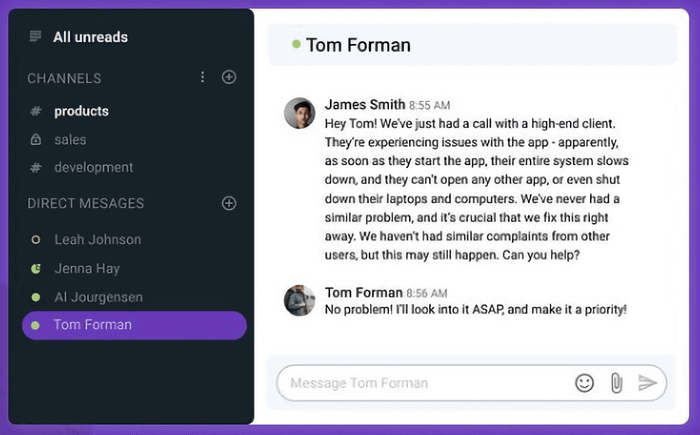
Ask in advance
Be considerate — ask for a favor as early as possible or as soon as you realize you need it.
People should have enough notice to be able to plan their time and possibly juggle around their schedule so they can fit you in.
This is especially important if you’re asking for a bigger favor — the earlier you do it, the better.
If you do it last minute, the likelihood of them saying ‘Yes’ dramatically decreases.
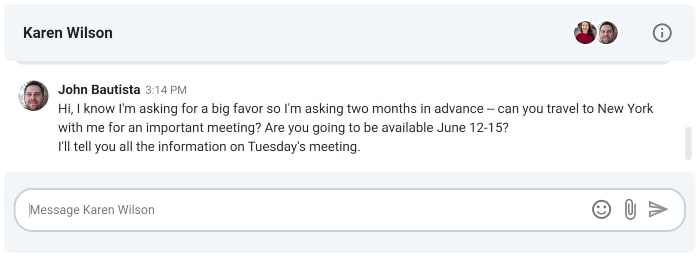
Be polite
I feel like Captain Obvious for saying this, but you should be polite. “If you’re mean to people, they won’t want to help you” isn’t a groundbreaking new discovery — I know you already know this — but I still feel obligated to mention it.
Assuming we all know how to not be rude to others, here are some additional tips for being a considerate team member:
- Phrase it as a question, rather than you giving them a task — and don’t forget “please” and “thank you”.
- Don’t ask people for a favor if you see they’re super busy with other tasks, on a coffee/lunch break, or on their day off.
- Give them an “escape route” (e.g. “I completely understand if you’re too busy” or “If you for any reason don’t feel comfortable, it’s okay”). A lot of people have trouble with saying ‘No’. If you give people an opportunity to decline, they won’t feel like they’re in the uncomfortable situation of feeling obligated to say ‘Yes’, even though they know they’ll end up overworked.
Let’s see how the request would look following these tips:
“Hey, this article needs proofreading.” ❌
“Hey, can you please proofread this article for me? The deadline for my article is tomorrow and you’re the best proofreader on our team. If you’re busy too, I understand. Thank you so much in advance!” ✅
Show your gratitude
There’s nothing worse than going out of your way to help someone and they end up being ungrateful. Always show your appreciation to those who gave you a hand, and be sincere and genuine about it.
After all, if you want your relationships (both work and personal) to be beneficial, you have to put the effort into maintaining and nourishing them.
Imagine if you helped someone and they ignored you after they got what they needed from you — you’d be hurt and you’d never want to help them again.
So, depending on the size of the favor and how close you are to the person who did you a favor, you can:
- Thank them in person and tell them how much it meant to you,
- Send them a thank you card/email/message,
- Take them out to lunch, or
- Anything else you think it’s appropriate.
💡 Pumble Pro Tip
Learn more about the importance of saying “thank you” and what phrases are best to use:
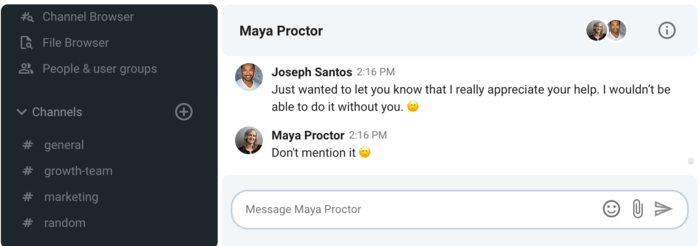
How to get people to say ‘Yes’ to your favor question
By now, you probably have a pretty good idea of how to ask someone for a favor.
But, do you know how to get them to say ‘Yes’?
Let’s go over some tricks (backed up by psychology) that can help you increase your chances of people agreeing to do what you’ve asked them.
Have a ‘Yes’ mindset
Mindset matters.
If you go into this thinking they will 100% say ‘No’, don’t even ask. In other words, don’t approach people with a mentality that you must be bothering them or wasting their time.
Our thoughts affect our actions, and our actions shape our reality.
Ask for a favor with a mindset that they’ll say ‘Yes’, and you will:
- Have more confidence,
- Be more convincing, and
- Be less uncomfortable and awkward.
Provide a reason
Tell people why you need that particular favor.
After all, research conducted in 1979 by Ellen Langer at Harvard illustrated the power of the word “because”.
Langer made people ask if they could cut the line to use a busy copy machine on a college campus.
Some just asked if they could use the machine, some of them added a valid reason (“because I’m in a rush”), and some of them just added… well, a reason (“because I have to make copies”).
Results were the following:
- When research participants just asked to cut the line without providing a reason, 60% of the people complied.
- When they added a reason (whether it was the compelling one or not), the compliance increased to 93–94%.
So, providing any reason will help.
But, the most convincing reason is explaining how performing the favor benefits the recipient of the question.
Think of it as making a sales pitch — a good salesperson won’t make you buy their product by telling you how much it will help them.
Unless you have a connection to that particular salesperson as a person, you don’t really care.
They convince you to buy from them by telling you how you benefit from it and what it can do for you.
So, if you need to convince someone to do you a favor, make sure to explain what they can gain from it.
Try a compliance tactic
Do you need a big favor or a small favor?
Try the foot-in-the-door technique if the former is the case or the door-in-the-face technique for the latter situation.
The foot-in-the-door technique
The foot-in-the-door (FITD) technique was coined by Johnathan Freedman and Scott Fraser of Stanford University in 1966.
It’s a compliance tactic that aims at getting someone to agree to do something big by first getting them to do something smaller (but of similar nature).
If they have already agreed to do you a small, reasonable favor, they would find it more difficult to refuse a bigger favor.
According to the self-perception theory, FITD is effective because internal thoughts drive people’s behavior, while external pressure is not as powerful.
People like to stay consistent in their beliefs and actions — which is why it’s important for two favors to be connected.
For example, if you want people to donate to a cause that’s important to your organization, asking them to follow the company’s social media (as a first, small favor) won’t do much.
However, asking them to sign a petition related to the cause might give better results.
The door-in-the-face technique
On the other hand, if you need a small favor, try the door-in-the-face technique (DITF).
It’s the opposite of FITD:
- First, you ask for a big favor the other person will probably turn down (slam the door in your face, metaphorically speaking).
- Then, you follow up with the smaller, much more reasonable request.
The fact that they declined you the first time increases the likelihood of complying with the second request.
Again, two requests should be of similar nature.
Let’s see how DITF would work in our example of raising money for an important cause.
You would have to ask for a larger donation than you would normally expect — let’s say $100 per person.
When they start making excuses (not many people would downright refuse to give money to charity), ask them if they can at least give $10–15. They will be much more likely to comply.
Use the Rule of reciprocity
According to Robert Cialdini, psychologist and academic:
“People will help if they owe you for something you did in the past to advance their goals. That’s the rule of reciprocity.“
He also quoted archeologist Richard Leakey, who stated that the urge to reciprocate is the essence of our humanness:
“We are human because our ancestors learned to share their food and their skills in an honored network of obligation.”
That is a tendency that transcends cultures and societies.
Social psychology aside, it’s (common) knowledge we’ve all learned at some point: you have to give something to get something.
Do favors for others and they’ll be more likely to want to do you favor.
If you get a ‘No’, respect it
You can follow every single one of our tips, but, if someone has their heart set on saying ‘No’, that’s what their answer will be.
You can do everything right and still get rejected — that’s life.
If that happens, don’t take it personally.
They may already have too much on their plate or feel underqualified to do the task successfully.
Respect their answer, thank them nevertheless, and think about your next move — what are your other options to solve the problem?
💡 Pumble Pro Tip
If you are that person who wants to say ‘No’, we got you covered too:
Example of asking for a favor professionally via email
In most workplaces, email communication is still a prevalent form of communication.
So far, we’ve provided plenty of phrases that can be used to ask for a favor in person or via a team messaging app, but emails have their own etiquette.
Keeping everything we’ve mentioned in mind, here’s the formula you can use to ask for a favor via email:
Dear [Title + Name],
[Brief introduction]
[Connection to the recipient / why you’re asking them a favor]
[What’s the favor + all necessary details] [Reasons and/or benefits]
[Expressing gratitude]
[Your name]
[Your contact information]
Here’s how it could look like put together:
Dear Mr. Smith,
I’m Mark Jones and I work as a PR Specialist in XYZ Company.
In your most recent blog post, I saw that you recommended our product, [Product X]. Since we’ve recently started conducting interviews with our customers to hear their experiences and share their stories, we would love to do an interview with you.
The interview would be done via Zoom and it would be published on our YouTube channel (Product X, 200,000+ subscribers). The questions would revolve around your background, your blog, how you found our product, what are your favorite features, and your overall experience with [Product X].
We would also include a link of your choice in the video description.
If you’re interested, please contact me to discuss further details.
We’re looking forward to collaborating with you!
Sincerely,
Mark Jones
markjones@email.com
555-555-555
❗ Important: Don’t forget to add a relevant email subject.
When you need help, ask for it via Pumble
With Pumble, a team communication and collaboration app, there are plenty of ways to ask your coworkers, managers, or employees for help with something. You can:
- Send them a direct message to explain what you need in detail,
- Send a message to an entire channel, to cast a wider net,
- Keep the conversation going in threads, so others can chime in,
- Send voice messages (because sometimes we really can’t explain everything in writing), and
- Schedule audio or video calls with people who can lend a helping hand.
And, always remember — if you want help from others, make sure you return the favor when they need it. After all, good work relationships are a two-way street, beneficial for both parties.





